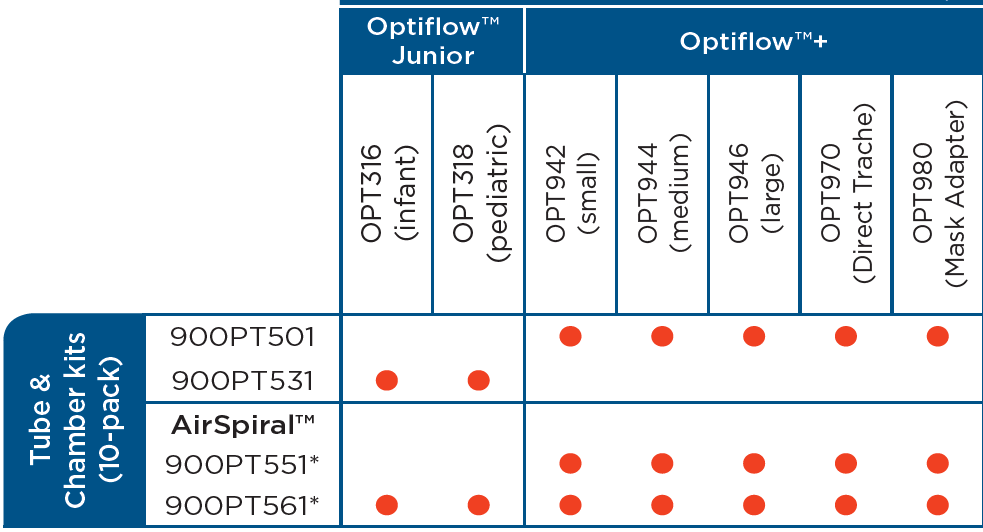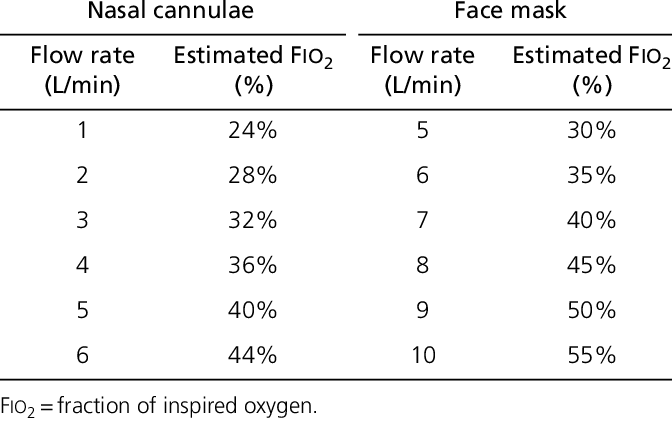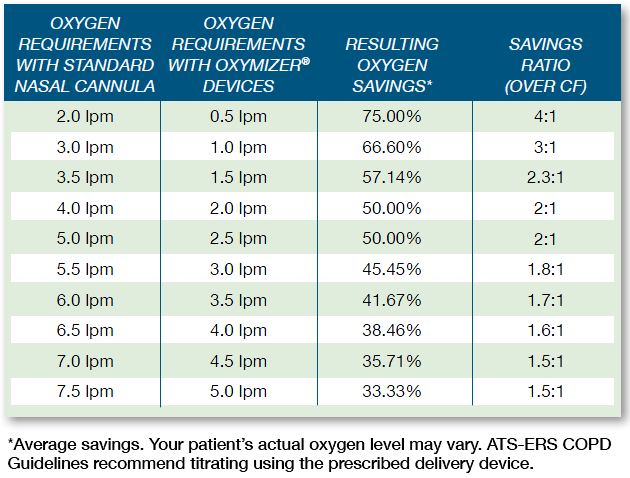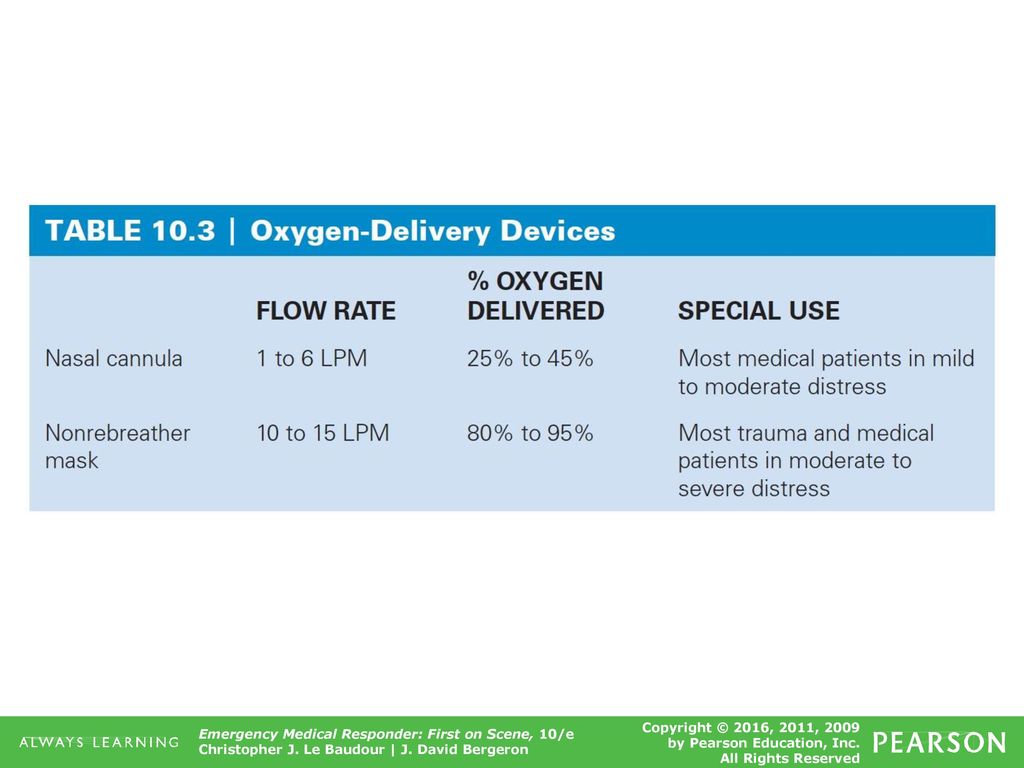oxygen delivery devices and flow rates australia
Pediatric oxygen delivery system Oxygen hood Covers only head allowing access to the lower body. Delivery devices work with different flow rates.

Clinical Guidelines Nursing Oxygen Delivery
Give oxygen therapy in a way which prevents excessive CO 2 accumulation - ie.

. It varies from 0 15L per minute. Oxygen is a life-saving therapy that nurses and respiratory therapists administer every day in the hospital. Values at various flow rates.
5L 40 6L 44. Tube with a mask or nasal cannula. Low flow device Most common device used for mild hypoxia Can be set between 1 and 6 LPM 24 to 40 FiO2 FiO2 increases approximately 4 with each liter of O2 KorupoluR GJ Needham DMContemporary CriticalCare.
Can delivery precise and dependable FiO2. A regulator is attached to the cylinders top and works like a tap allowing the safe adjustment of oxygen flow rate provided in Lmin 1. 2 to 15 Lmin.
As a result hyperlinks within guidelines are in the process of being updated. The recommended initial oxygen flow rate for open-circuit systems employing a non-rebreather mask has long been 15 Lmin-1. A comparison of the tissue oxygenation achieved using different oxygen delivery devices and flow rates.
1-2 Lmin via nasal cannulae or 2-4 Lmin via 24 or 28 Venturi mask in patients with acute exacerbations of COPD or conditions known to. 200969111 Bailey P Thomsen GE Spuhler VJ et alCrit Care MedJan2007351139145. When tubing was used below the face flow rates between 6 and 8 Lmin produced somewhat higher concentrations than 15 Lmin 5 cm.
Denise F Blake College of Marine and Environmental Sciences James Cook University Townsville Emergency Department The Townsville Hospital Townsville Queensland Australia 4814 E-mail. A pressure reading barometer. The flow rate can be set on the wall tap.
Whether your patient is on chronic oxygen or whether they are in acute respiratory failure your patients will commonly have oxygen ordered and it will be up to you as. Only goes up to 60 FIo2 so not for patients who have significantly high oxygen demands bulky. Ensure adequate clearance of secretions and limit the adverse events of hypothermia and insensible water loss by use of optimal humidification dependent on mode of oxygen.
25 FiO 2 at 15 Lmin 90 FiO 2 at 15 Lmin FiO 2 can be adjusted to between 25 and 90 by changing the flow rate Conclusion OxyMask effectively delivered a wide range of FiO 2 values through simple adjustments to the flow rate. They include Nasal cannulae. 6 rows Device.
Based on transcutaneous oximetry values of the commonly available emergency O₂ delivery devices the NRB at 15 Lmin ¹ is the device and flow rate that deliver the most O₂ to body tissues and therefore should be considered as a first-line pre-hospital treatment in divers with suspected decompression illness. Ideal for short term use for neonates and infants. OxyMask is an all-in-one replacement for other mask types which could save time and reduce trips to the.
A regulator is attached to the cylinders top and works like a tap allowing the safe adjustment of oxygen flow rate provided in Lmin 1. As a temporary measure click the link above to find the guideline within the contents. Tube with a mask or nasal cannula.
Selection of the appropriate flow rate and delivery device. There are two important things to consider when delivering supplemental oxygen to your patient. High-flow warmed and humidified nasal oxygen For patients who need higher concentrations of oxygen at flow rates of 10-40 liters per minute.
The nasal cannula is a device that has two prongs that are placed in the patients nostrils and deliver oxygen at flow rates of 1 to 6 liters per minute. When the tap is manually opened the oxygen takes the line of least resistance to the patient via an oxygen delivery device eg. 1 to 6 liters.
These devices deliver a variable inspired oxygen concentration to the patient which depends on the PIFR. When delivering oxygen by wafting the highest oxygen concentrations are achieved when positioning tubing 5-15 cm in front of the face or positioning tubing or a paediatric non-rebreather mask 5-10 cm below. This delivers to the patient a flow rate of 45 liters per minute and an oxygen concentration of 35 percent.
Of the commonly available devices promoted for O₂ delivery to injured divers similar PtcO₂ and nasopharyngeal F I O₂ values were obtained with the three devices tested. For example the recommended flow rate for a 35 of venturi valve is 8 liters per minute. O2 and air premixed passed through heated humidifiers.
A pressure reading barometer displays the remaining oxygen. Nebulizers should be avoided. Reduce the work of breathing.
Increasing the flow rate to 10 liters per minute increases the total flow to the patient but the oxygen concentration delivered remains at 35 percent. Per minute will deliver approximately 24 to 44 percent of oxygen to the patient. Avg flow 10-15 ltmin results in 80-90 oxygen conc.
Depending on a patients inspiratory effort tidal volume speed of inspiration and respiratory rate the PIFR can often exceed the flow rate at which oxygen or an oxygenair mixture is supplied by the device meaning that at the time of PIFR. The percentage of oxygen inspired depends on the flow rate and the delivery device. If oximetry is not available or reliable oxygen saturations cannot be determined and hypoxaemia is suspected oxygen can be delivered at.
MORS with an oronasal or intraoral mask demand valve with an intraoral mask and NRB at a flow rate of 15 Lmin¹. The required oxygen flow rate can be very low often between 08 and 15 Lmin-1. When the tap is manually opened the oxygen takes the line of least resistance to the patient via an oxygen delivery device eg.
Flow rate 1-4Lmin 4L will dry the nose 2L is more comfortable. 2435 FiO2 at a flow of 14. The high flow rates were achieved by substituting the standard flowmeter calibrated to 15 Lmin with a.
Oxygen Delivery Devices and Flow Rates are important concepts to understand as a nurse. The increased efficiency is achieved through increased complexity. In these situations supplemental oxygen can be administered via various oxygen delivery devices ranging from nasal prongs to invasive ventilation.
Reservoir cannula As mentioned previously reservoir cannulas improve the efficiency of oxygen delivery saving two to four times the oxygen delivered via continuous flow. Adapters deliver set amounts of FiO2 at 24 to 60. Because the peak inspiratory flow rate of a resting individual is typically below 30 Lmin 2 delivering oxygen at higher flow rates eg 45 Lmin precludes contamination of oxygen within the facemask with room air so that the effective FiO 2 is close to 10.
In Dec 2021 a new WNHS website launched. The oxygen flow rate and the FiO2.

Estimated Inspired Oxygen Concentration Download Table
Clinical Guidelines Nursing Oxygen Delivery

Chad Oxymizer Disposable Oxygen Conserver Oxygen Reservoir Drive Medical O 224 P 224 Vitality Medical

Transtracheal Catheter Image Courtesy Www Airwayeduca Download Scientific Diagram

Preoxygenation Deoxygenation And Reoxygenation During Intubation

Estimated Inspired Oxygen Concentration Download Table

Comparing The Performance Of First Aid Oxygen Delivery Systems X Ray Mag

Comparing The Performance Of First Aid Oxygen Delivery Systems X Ray Mag

Equation For Oxygen Delivery Download Scientific Diagram

Comparing The Performance Of First Aid Oxygen Delivery Systems X Ray Mag

Critical Second Oxygen Delivery System Card Respiratory Therapist Student Nursing Notes Respiratory Therapy

10 Principles Of Oxygen Therapy Ppt Download

Oxygen Delivery By Device Nasal Cannula Indicated For Low Flow Low Percentage Supplemental Oxygen Respiratory Therapy Student Pediatric Nursing Nurse

Efficacy Of High Flow Nasal Cannula Vs Standard Oxygen Therapy Or Nasal Continuous Positive Airway Pressure In Children With Respiratory Distress A Meta Analysis The Journal Of Pediatrics

Types Of Oxygen Delivery Device F Do 2 Capabilities And Indications Download Table

Both Incubators And Kangaroo Care Have Advantages And Disadvantages Kangaroo Care Premature Baby Newborn Care
